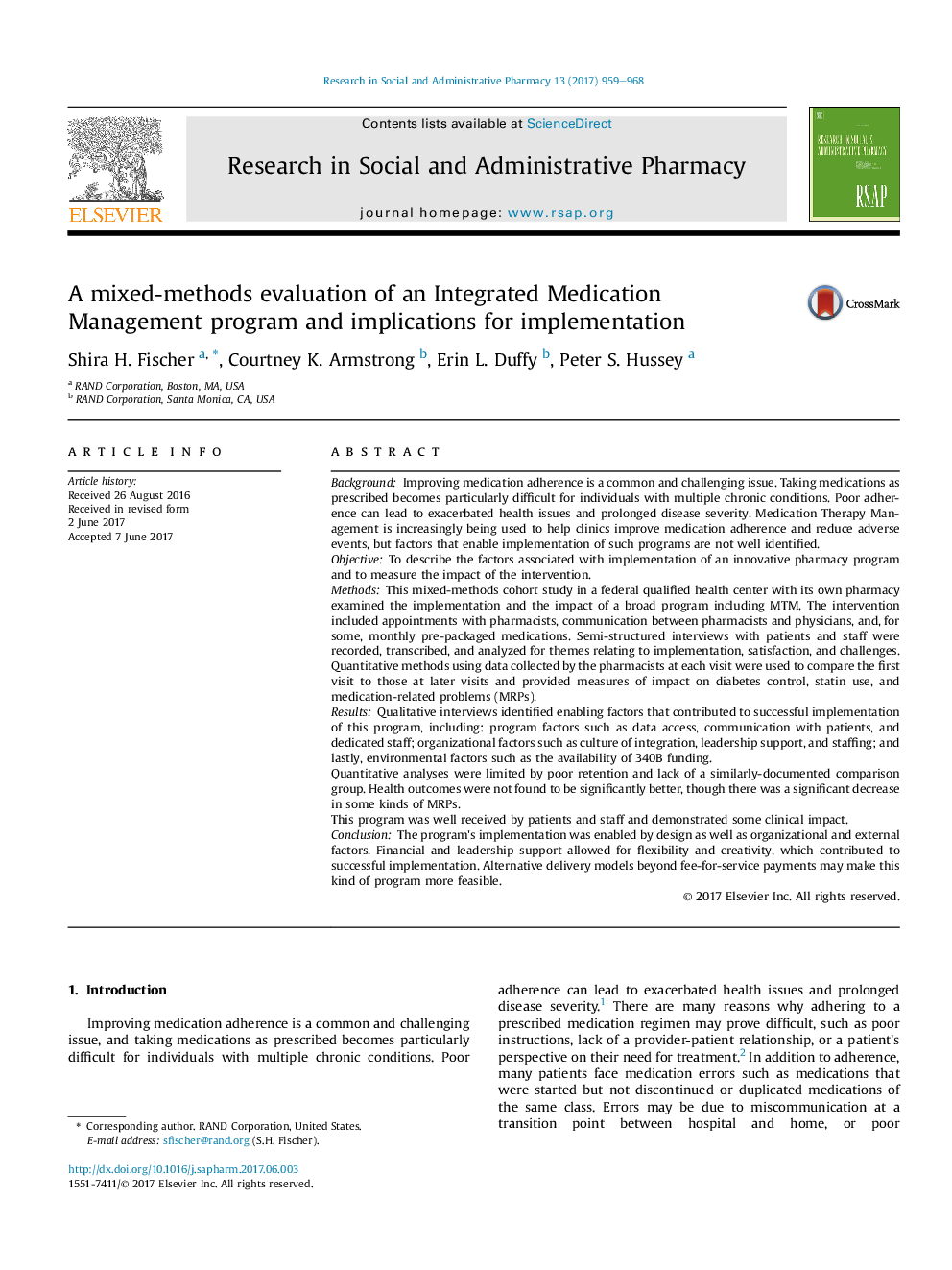| Article ID | Journal | Published Year | Pages | File Type |
|---|---|---|---|---|
| 5551172 | Research in Social and Administrative Pharmacy | 2017 | 10 Pages |
â¢Mixed methods evaluation of innovative MTM program, exploring implementation and impact.â¢Some clinical impacts but limited quantitative impact.â¢High satisfaction from staff and patients in qualitative interviews.â¢Many contextual factors that affected program.
BackgroundImproving medication adherence is a common and challenging issue. Taking medications as prescribed becomes particularly difficult for individuals with multiple chronic conditions. Poor adherence can lead to exacerbated health issues and prolonged disease severity. Medication Therapy Management is increasingly being used to help clinics improve medication adherence and reduce adverse events, but factors that enable implementation of such programs are not well identified.ObjectiveTo describe the factors associated with implementation of an innovative pharmacy program and to measure the impact of the intervention.MethodsThis mixed-methods cohort study in a federal qualified health center with its own pharmacy examined the implementation and the impact of a broad program including MTM. The intervention included appointments with pharmacists, communication between pharmacists and physicians, and, for some, monthly pre-packaged medications. Semi-structured interviews with patients and staff were recorded, transcribed, and analyzed for themes relating to implementation, satisfaction, and challenges. Quantitative methods using data collected by the pharmacists at each visit were used to compare the first visit to those at later visits and provided measures of impact on diabetes control, statin use, and medication-related problems (MRPs).ResultsQualitative interviews identified enabling factors that contributed to successful implementation of this program, including: program factors such as data access, communication with patients, and dedicated staff; organizational factors such as culture of integration, leadership support, and staffing; and lastly, environmental factors such as the availability of 340B funding.Quantitative analyses were limited by poor retention and lack of a similarly-documented comparison group. Health outcomes were not found to be significantly better, though there was a significant decrease in some kinds of MRPs.This program was well received by patients and staff and demonstrated some clinical impact.ConclusionThe program's implementation was enabled by design as well as organizational and external factors. Financial and leadership support allowed for flexibility and creativity, which contributed to successful implementation. Alternative delivery models beyond fee-for-service payments may make this kind of program more feasible.
